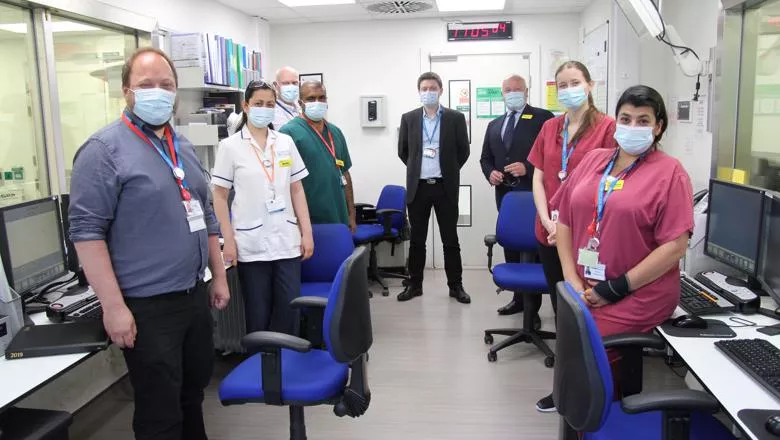Having our own supply again will increase our resilience. We have been making FDG since 1992 but the licence for the new facility now enables us to make it to highest modern standards in line with the Good Manufacturing Practice regulations.
Professor Alexander Hammers, Head of the PET Centre and Professor of Imaging and Neuroscience
11 June 2021
PET Centre granted license to produce and inject radiotracer for management of cancer
The PET Centre has been granted an MHRA license

The King’s College London and Guy’s and St Thomas’ PET Centre has been granted a manufacturing license by the Medicines & Healthcare products Regulatory Agency (MHRA) to produce and inject Positron Emission Tomography (PET) tracers. Such tracers are undersupplied and can be used for identification of cancer.
Currently there are only two commercial suppliers of FDG (Fluorodeoxyglucose), a sugar labelled with a small trace of radioactivity, in the UK. Any problems with production will lead to delays in scanning patients.
The news follows a £41M investment from King’s College London and Guy’s and St Thomas’ to rebuild the PET Centre over the past eight years, including four new scanners, a new scanning suite, and the new cyclotron and radiochemistry facility which has now been licenced.
The MHRA license applies to the whole facility that will produce the FDG tracer, and other tracers in the future. The facility includes a cyclotron, a particle accelerator that produces the radioactive isotopes needed for PET.
The radioactive atoms are integrated into molecules in the radiochemistry labs comprising research parts and two Good Manufacturing Practice (GMP) labs which are also licensed for the production of radiotracers for injection into humans.
The team will now proceed to validate and make, in the next few months, the following tracers: [13N]NH3 (ammonia) for measuring blood flow in the heart and [11C]methionine for imaging brain tumours.
PET is a medical imaging technology; the vast majority of patient scans use the FDG tracer.
FDG is injected into a patient’s vein and travels around the body. It then goes to places where energy is needed.
Most of the time doctors use it to look for tumours (which use more energy than their surroundings).
The brain also uses a lot of energy. Doctors can therefore also use FDG to look at brain function. For example, FDG can help in diagnosing memory problems or where epileptic seizures come from.
This is a critical milestone for our PET Centre and more broadly for our MedTech Hub initiative. This achievement will further propel our innovative pipeline of new compounds, enabling their translation into first-in-patients, while also providing the best of care to our ever-growing patient population. I would like to congratulate the entire team for this exciting achievement.
Professor Sebastien Ourselin, Head of School, School of Biomedical Engineering & Imaging Sciences
Improving the quality of patient care is at the heart of everything we do at Guy’s and St Thomas’ and we have made significant investment in our imaging services in recent years to enhance both clinical service delivery and research, working closely with King’s College London. This has included investment in our PET Centre, as PET scans are key to diagnosis and treatment for patients with a number of conditions, including some complex cancers. I am delighted that the new scanning suite, new cyclotron and associated facilities have now been licenced by the MHRA as this will ensure we are able to produce the most modern radiotracers, to the highest standard, onsite for the benefit of our patients now and in the future.
Professor Ian Abbs, Chief Executive of Guy’s and St Thomas’


